Count on these frost-tolerant flowers, shrubs and trees to bring color during the garden’s quiet season.
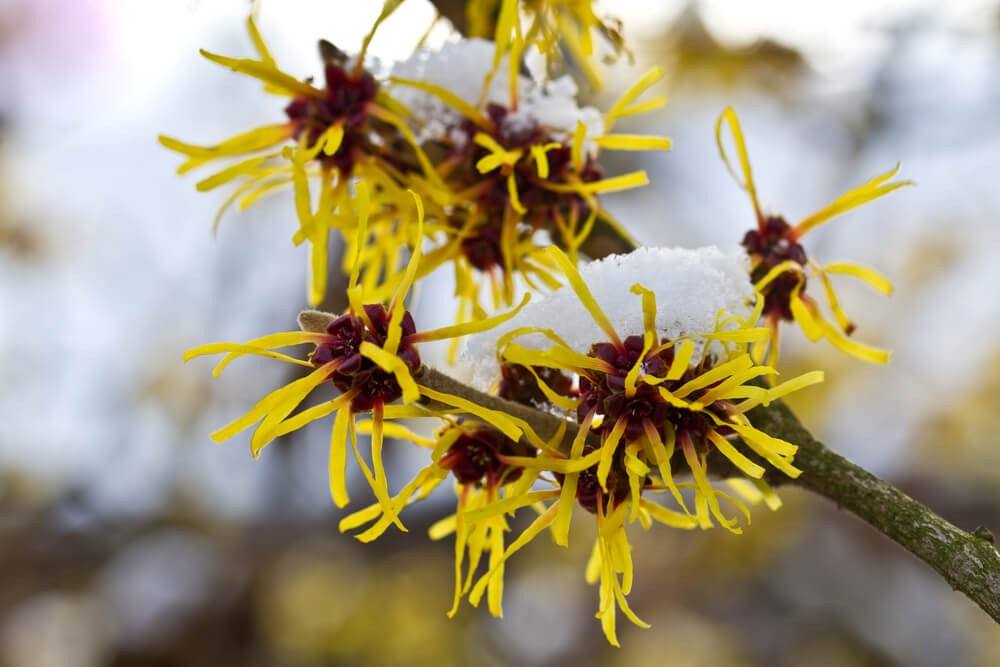
Temperatures are dropping, snow is falling. Many trees have dropped their leaves by now. And most plants have gone dormant, resting until the cold weather subsides.
But not all plants. There are a handful that bloom even during the coldest months. So even if you despise the season, planting a winter garden full of frost-friendly plants is a way to add some color and spice up an otherwise dreary time of year.
To streamline your process and limit your search, we’ve assembled a list of annuals, perennials and shrubs—listed in alphabetical order. As there’s a wide range of climatic conditions across the country, we’ve also included the USDA hardiness zones they’ll fare best in.
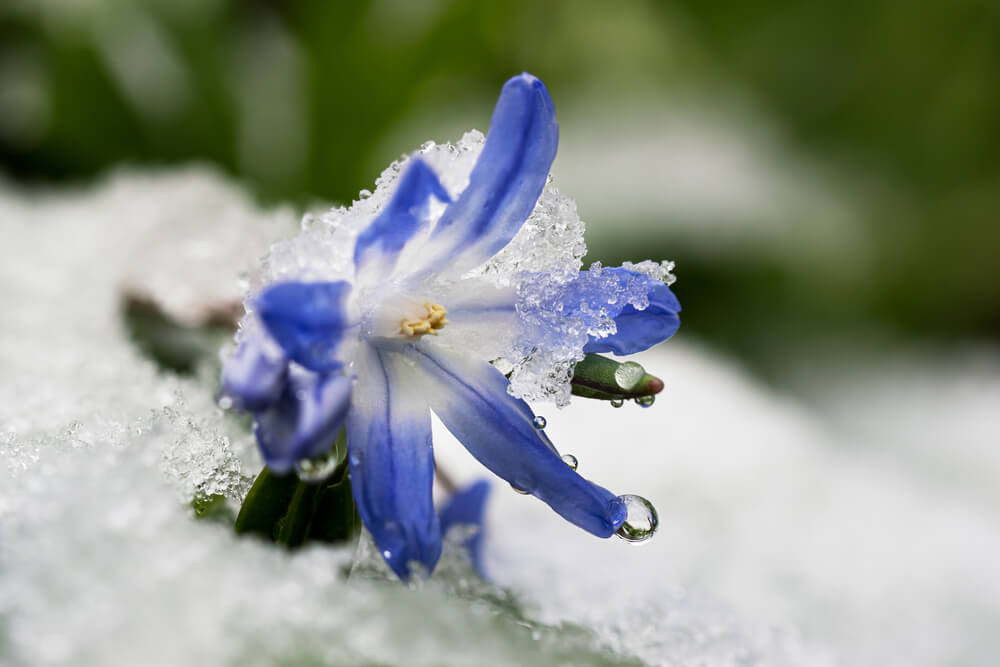
Photo by JGade, Shutterstock.
Chionodoxa
Chionodoxa is commonly referred to as Glory of the Snow. This is because when the plant is growing, its starry petals will poke up through the snow. The flowers bloom in shades of blue, pink or white. As a bulb, Glory of the Snow is at a higher risk of rotting if it grows in overly moist soil. That means you need to make sure wherever you’re planting has good drainage. One way to improve the soil’s absorbability would be to mix in compost or a mixture of leaves from your yard.
We suggest planting it in a rock garden or at the front border of your garden, ideally in the fall. This bulb grows to be just less than six inches tall; it has a reputation for being relatively low maintenance and can thrive in full or partial sun. Bonus—it’s also resistant to deer and rabbit.
Chionodoxa bulbs are winter hardy in zones 3-8.
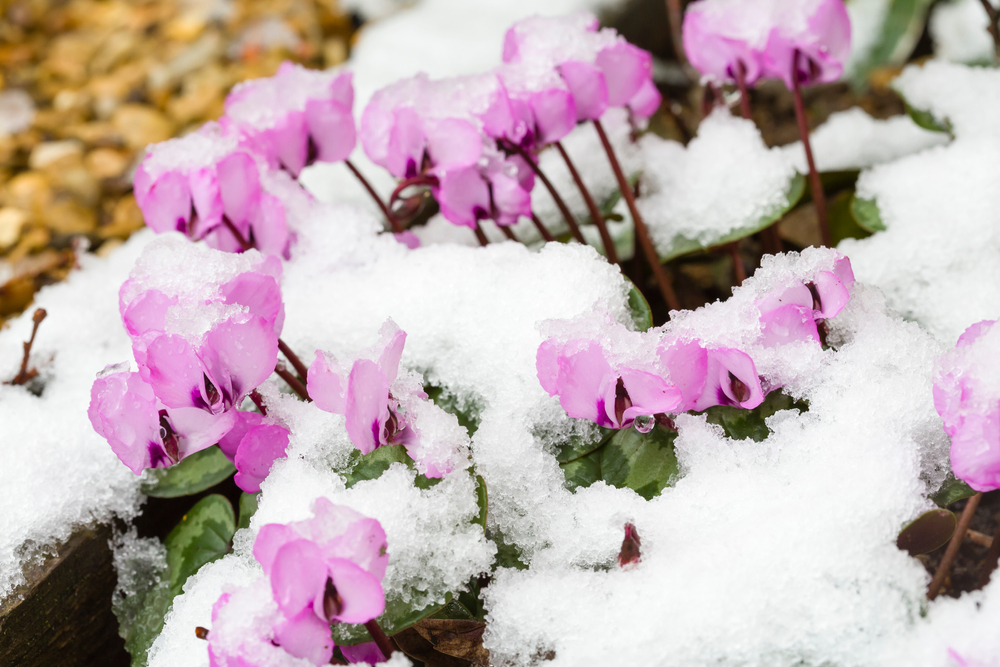
Photo by Paul Maguire, Shutterstock.
Cyclamen
This plant’s butterfly-like reflexed petals come in shades of light pink, dark pink/red and white with silver streaked leaves. Cyclamen blooms during the depths of winter, from January to March, and prefers partial shade and well drained, humus rich soil. It reaches about three to six inches in height. A bonus for low-maintenance gardeners is that they are known to be fairly drought-tolerant and require very little care. They will self-seed and naturalize if not disturbed and they’re also deer resistant.
We recommend applying a two-inch layer of loose mulch around the plant’s roots or base to protect it from periods of severe frosts. In the spring, late summer and early fall, water the plant regularly when the top few inches of the soil has dried out. As a bulb, it is vulnerable to rotting in waterlogged soil, so be mindful of not overwatering.
Cyclamen grows best in zones 4-9.
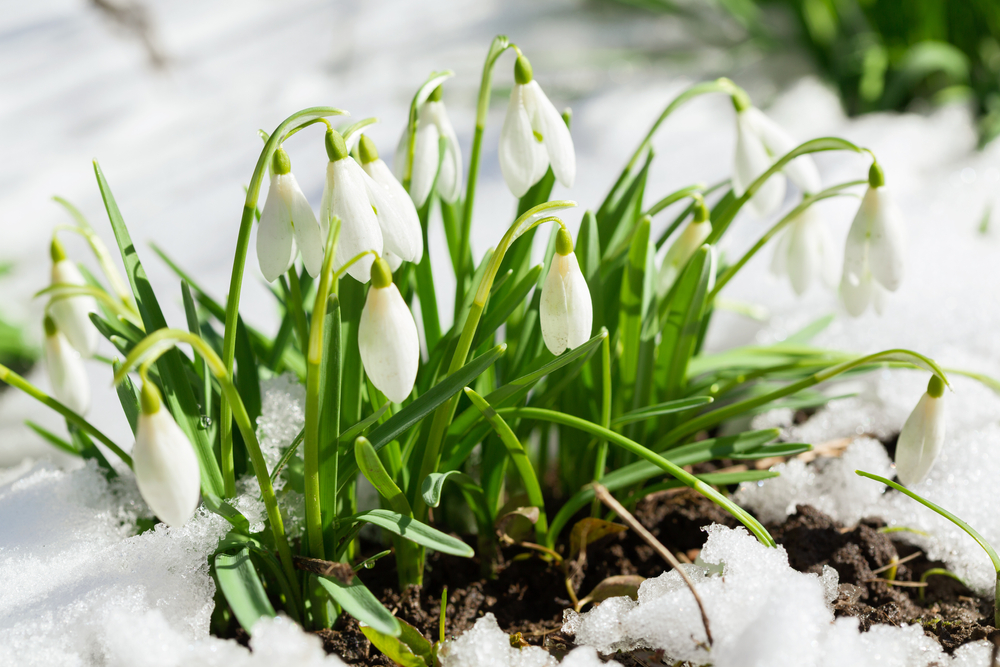
Photo by Nitr, Shutterstock.
Galanthus
Galanthus, also called Snowdrop, are droopy, bell-like flowers that grow anywhere from six to 10 inches tall. This perennial enjoys cold to moderately cold winters and will even sprout up through the snow. One bonus is that they’re a pest-free plant, largely unpopular with rabbits, deer, chipmunks and mice. They also don’t require any weeding or deadheading.
It can grow in any type of soil (chalk, clay, loam, sand, etc.) with varying pH levels, but choose a place that has moist, but well-draining soil. This plant also prefers shade, so any spot under a tree or shrub or along the side of your house are ideal choices. It’s worth noting that Snowdrops are poisonous when ingested, so be careful or forgo the plant if you have pets or young kids.
Snowdrops are ideal for zones 3-8.
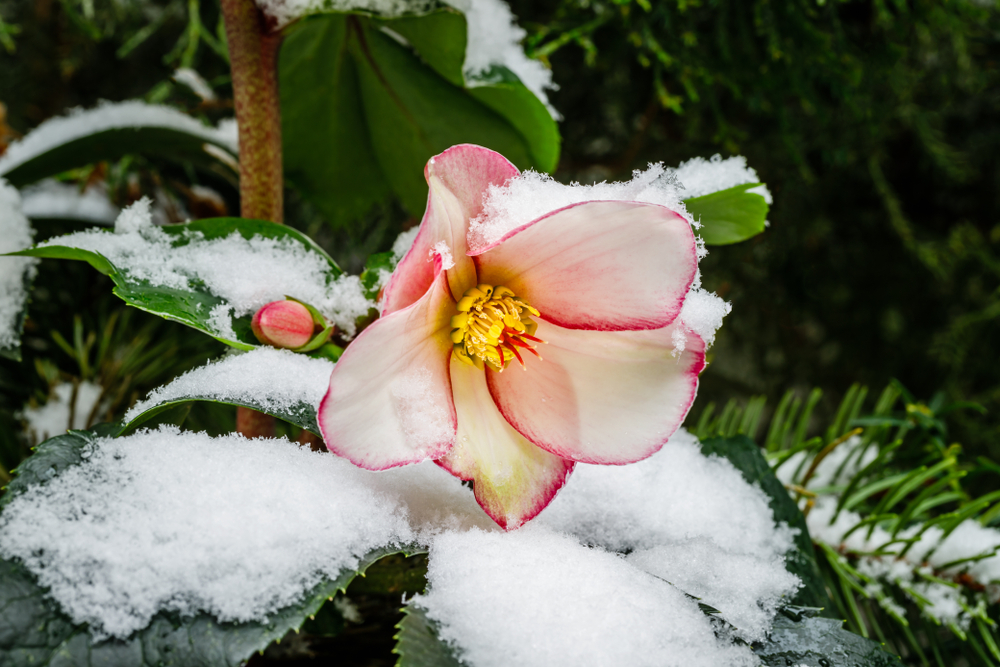
Photo by nnattalli, Shutterstock.
Hellebores
Hellebores bloom in mid winter to early spring, depending on where you live. While these perennials look delicate, they are extremely hardy and can be planted at any time of the year as long as the soil isn’t frozen.
They grow best in rich, humus, alkaline soils that drains well. They are also relatively versatile, tolerating full sun to full shade. In the spring and fall, when they are developing, it’s important to water them. But once summer strikes, ease up because the heat puts them in dormancy. Many gardeners like to plant these in raised beds or on a hill because the flowers fall downwards. A winter jewel box is a good example of one popular planting strategy.
Depending on the variety, hellebores can be planted in hardiness zones 3-9. Reach out to your local greenhouse or extension office to find out which one works best for your location.
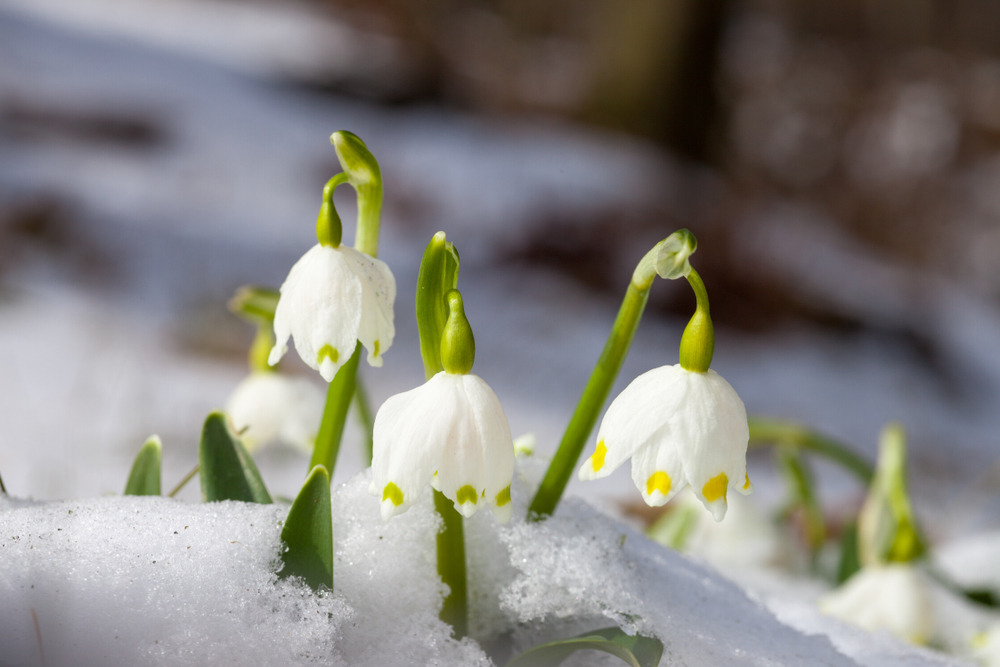
Photo by Uwe Zimmer, Shutterstock.
Leucojum
Leucojum, or spring snowflake, is another bulb that breaks snow blankets in the late of winter or early spring. Its tiny bell-shaped flowers are white with green spots on its tepals (the outer part of the flower). It reaches a height ranging from eight to 10 inches and prefers full to partial sun.
While the leucojum will tolerate acidic, neutral or alkaline soils, you need to make sure that wherever you decide to plant it, it has good drainage. Again, this is because it’s a bulb and prone to rotting if the soil is oversaturated. Many gardeners choose to add the spring snowflake to their rock gardens. It’s resistant to garden munching animals like deer and rabbits.
Leucojum is suitable for anyone growing in zones 3-8.
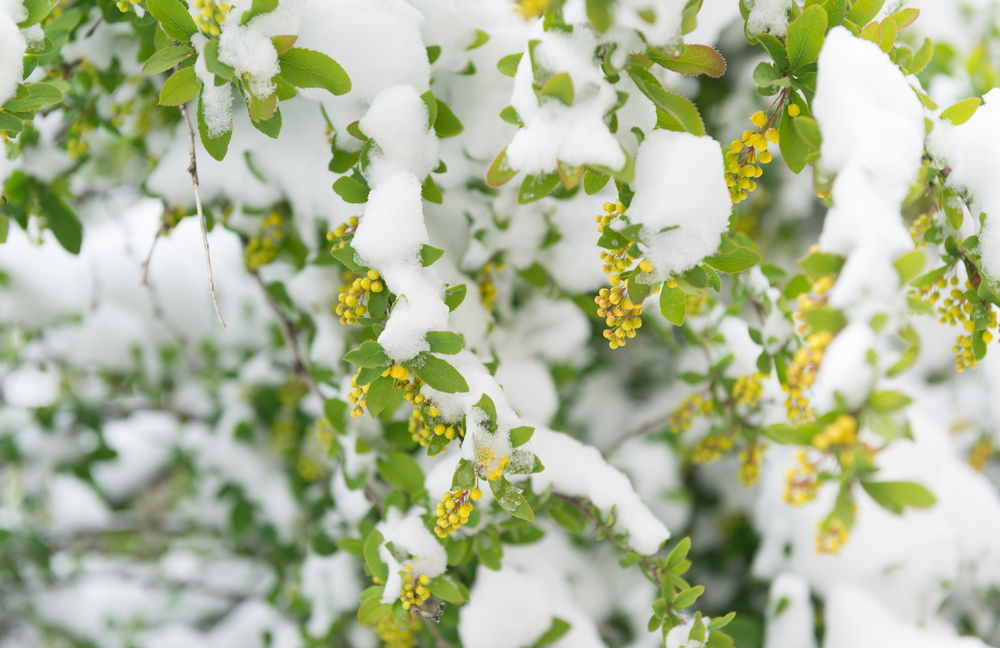
Photo by Kraft_Stoff, Shutterstock.
Mahonia
Mahonia, also known as Winter Sun, sprouts bushels of fragrant yellow flowers from November until March. This shrub can grow up to 10 feet tall and has a reputation for being a relatively low maintenance plant. A number of gardeners who grow this have said that often it will pick up rust fungus. (If you’re not familiar with how to treat rust, the University of Minnesota Extension has this guide that will help you identify it and walk you through management and prevention steps.)
We suggest planting it in the fall before frost spells. It grows in all types of soil, but prefers soil with higher acidity. It can grow in full or partial shade. If you want the foliage to look as full as possible, prune the tips of the plant in early spring. Winter sun is typically planted in banks and slopes, which can help counter erosion and slow water run off.
Mahonia grows best in hardiness zones 7-9.
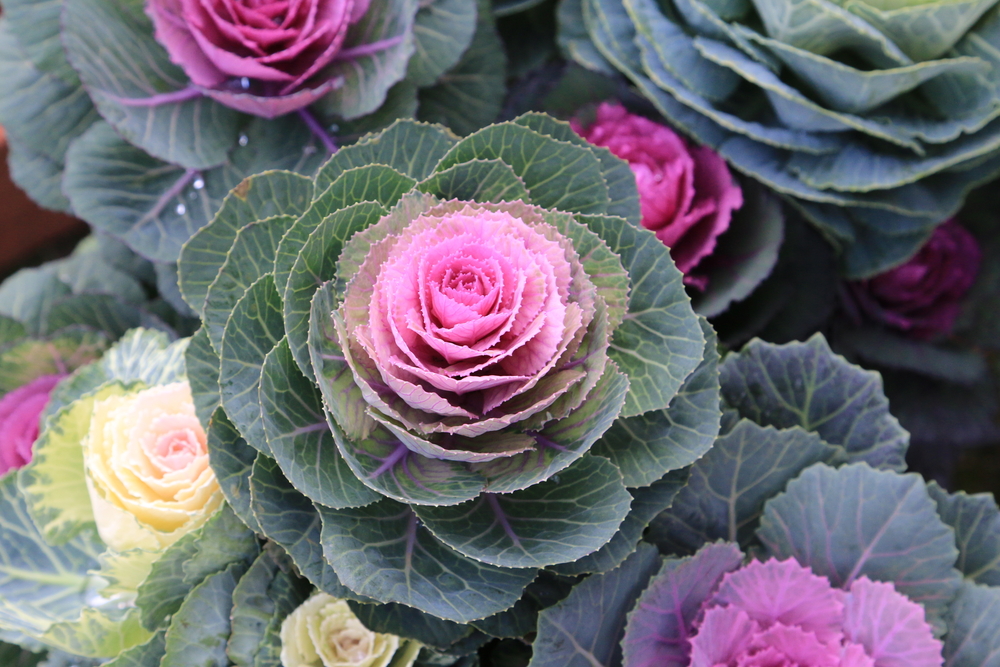
Photo by Y_Hirosan, Shutterstock.
Ornamental Cabbage and Kale
The beautiful thing about ornamental cabbage and kale—which technically can be eaten, but will be far more bitter than edible varieties—is that their colors deepen as it gets colder. These plants come in shades of purple, pink and cream. They can range in heights from six to 35 inches, depending on the variety. University of Wisconsin-Madison’s Horticulture Extension lays out some options for you here.
They grow in full sun to partial shade and loamy, well draining soil that’s slightly acidic. It’s important to note that while these plants are a cool weather crop and thrive in cold temperatures, there could be the chance that a cold snap hits and they haven’t acclimatized to winter yet. If this happens and they start turning mushy and the leaves appear to look somewhat transparent, remove them.
These ornamentals can be planted in hardiness zones 2-11.
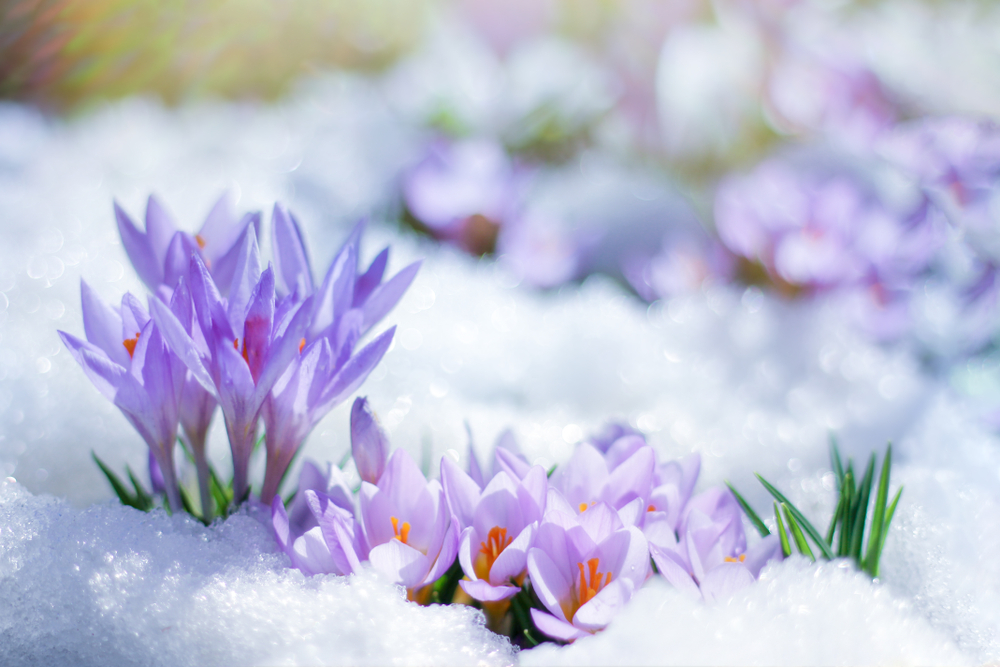
Photo by Esich Elena, Shutterstock.
Snow Crocus
Snow crocus have buttercup-like flowers that bloom in late winter to early spring— the catch is that they only open up when the sun is shining. Their flowers come in shades of white, yellow, blue and light orange, and they typically reach a height around three to four inches. There are a number of crocus species (including the kind that produces saffron), so make sure that when you are making your selection you opt for a snow crocus or one that is a winter bloomer.
Unfortunately, this plant does attract rodents, so we do suggest planting them next to other bulbs that aren’t attractive to animals. It will thrive in any type of soil with good drainage. A fun fact is that crocus bulbs that remain in the ground will always develop and bloom a little bit earlier than they did the previous year. They should be planted in the fall.
Snow crocus is suitable for hardiness zones 3-8.
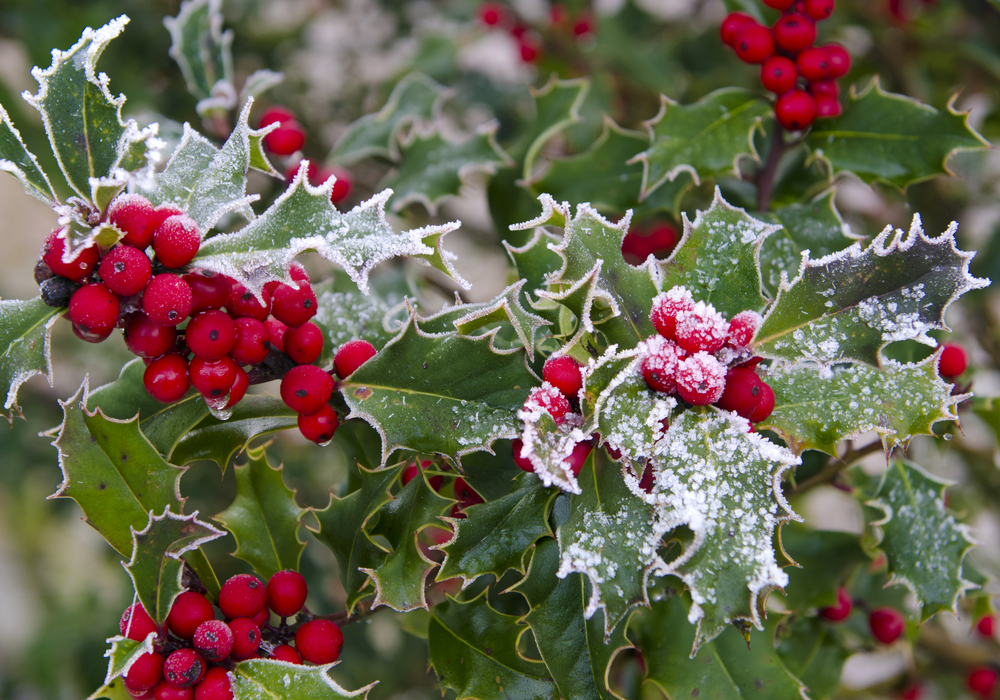
Photo by KA Photography KEVM111, Shutterstock.
Winterberry
Otherwise known as North American holly, this shrub bears festive red berries that many associate with the holiday season. In order to get a plant that sprouts ornamental fruit on its branches, you’ll need to ensure you have a male and female plant for pollination to occur. You can ask your local nursery or greenhouse to ensure you’ve made a proper selection. In general, one male plant can pollinate up to 10 female plants. Late summer or early fall are the best transplanting times.
The plant’s height ranges from three to 15 feet tall. They fare well in acidic, loamy or clay soil that has a high amount of organic material. And they can be planted in full sun or partial shade. They will tolerate poorly drained soils and boggy conditions. We recommend pruning this plant in early spring, just before a new growth period.
Winterberry shrubs are best suited for zones 3-9.
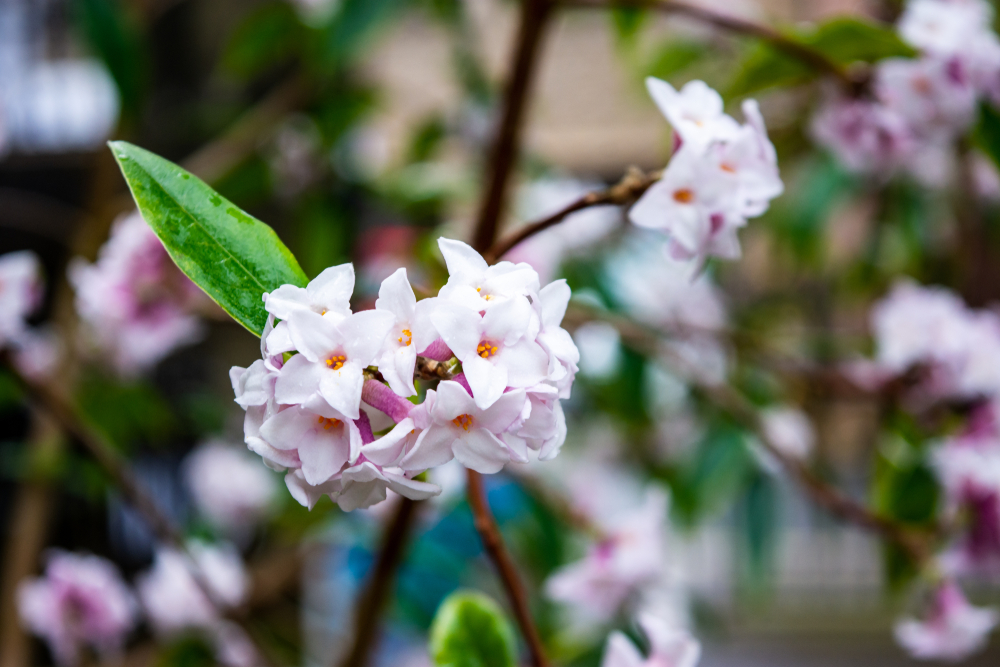
Photo by Starsphinx, Shutterstock.
Winter Daphne
This shrub has fragrant, tubular purple, pink and white flowers and leathery green leaves. It grows, on average, three to five feet tall and up to four feet wide. This is a slow maturing plant and it will take seven to ten years to reach its full size. So only make this your choice if you have long-term gardening plans.
The Winter Daphne will tolerate a location that has partial to full sun. It grows best in rich, loamy, well-drained soil with a slight acidity. It is important to note that these are finicky plants. Many report it not transplanting well and describing a difficult balance between keeping the soil moist, but ensuring it still has good drainage. Those who decide to prune this shrub should do so after it flowers as it will preserve the tree’s condition for the following season.
Winter Daphne is suitable for hardiness zones 4-9.

Photo by Paul Robinson, Shutterstock.
Winter Jasmine
Winter Jasmine’s bright, buttery flowers are just the pick-me-up you need. This perennial shrub typically blooms in winter or early spring. It prefers well-draining, sandy, loamy soil and full sun. It can grow up to four feet tall if unsupported or up to 15 feet tall if grown on a trellis. This plant needs an environment where its roots can develop seamlessly, so ideally you want to plant in the fall, but if this isn’t possible, you can plant it anytime as long as you avoid periods of freezing or hot days.
In the summer months, it will be important to ensure the plant has moisture. Using mulch around the roots and base of the plant is a good way to do this. We also recommend pruning and fertilizing this plant in the spring after it’s lost its flowers. It is almost entirely pest resistant, but often becomes the target of aphids and mealybugs.
Winter Jasmine is best for zones 6-10.
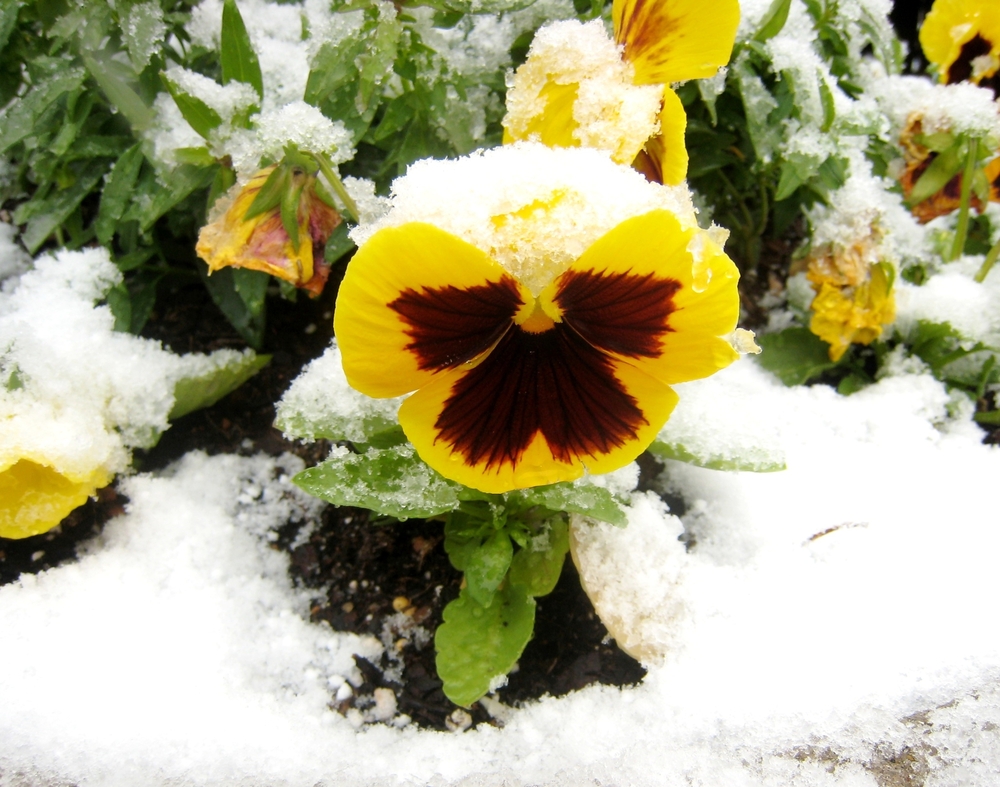
Photo by Trinochka, Shutterstock.
Winter Pansies
A choice for more mild winter climates, winter pansies can handle light frosts. These whimsical flowers with tiny heart-shaped petals prefer a moist, well-drained soil. Wood based mulch will keep their roots cool and moist. A hardy species of winter pansy will flower for most of the winter season and into spring when planted in late October or November.
In terms of planting location, it’s best to plant them away from walkways or driveways that are salted in the winter, as salt can damage them. They need moist, but well draining soil. If you’re looking to gather more caretaking tips for pansies in the winter months, the University of Georgia Extension has created a comprehensive guide.
Winter pansies thrive best in hardiness zones 7-9.
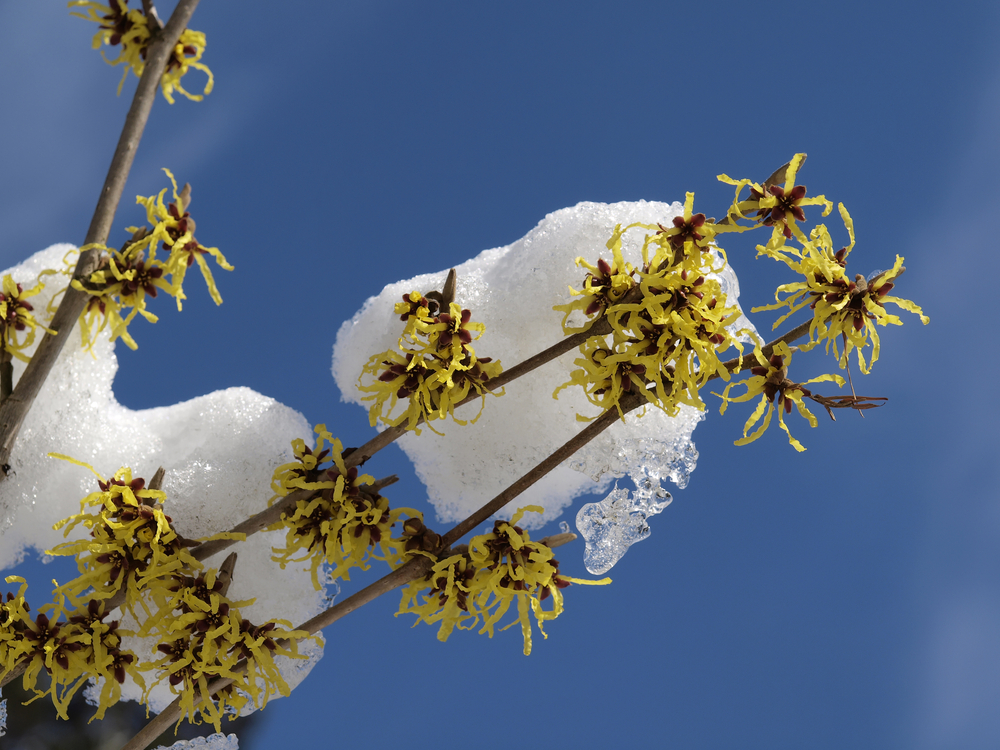
Photo by Shutterschock.
Witch Hazel
Witch hazel is a shrub with long, wispy branches. Its bristly yellow flowers typically bloom in February or March. The leaf, bark and twigs have traditionally been used to make a medicine to treat various ailments.
This plant grows at a height ranging from nine to 20 feet. However, if you’d like to keep them smaller, you can prune them once they’ve finished blooming. Witch hazel will grow in lightly shaded areas, but it prefers full sun. It likes moist, slightly acidic soil (between a pH of 4.5 and 6.5) with good drainage. Sometimes coral spot fungus can be an issue with this plant. The University of Massachusetts Amherst lays out best management practices here.
Witch hazel is best suited in zones 3-8. There are many types of witch hazel, so check with a local master gardener, nursery or extension officer that you’re choosing a winter-flowering variety.
This post has been edited to reflect the point in the season when the article was published. The days are indeed getting longer.
Very interesting article. I had no idea there were so many winter-flowering plants. My question now is, if flowers’ purpose is to attract pollinators, what pollinators are around in the winter?
Not to quibble, but as a farmer in the upper Midwest, I can assure you that since December 20th, the days are indeed getting longer. Its 1° With 15mph winds today, gotta find hope where we can!
Dear Editors: While this may be an “interesting article” for the less knowledgable gardener, it is my view that this article is not well-selected for publication on a website publication devoted to progressive/innovative/environmental friendly farming. The article reads as if its audience are gardeners. While it is well-written for tat audience, I do not see it as particularly interesting for farmers.
My camellia bushes flower twice in the summer and once (or Twice) in December/January every year. I’m in the Southeastern Pennsylvania area. Winters aren’t quite as cold as they used to be in December/January many years ago; but it still gets quite cold. They are beautiful and hardy two things I’m not.